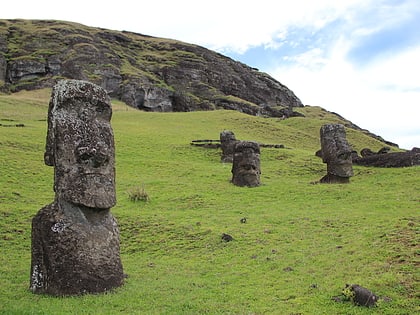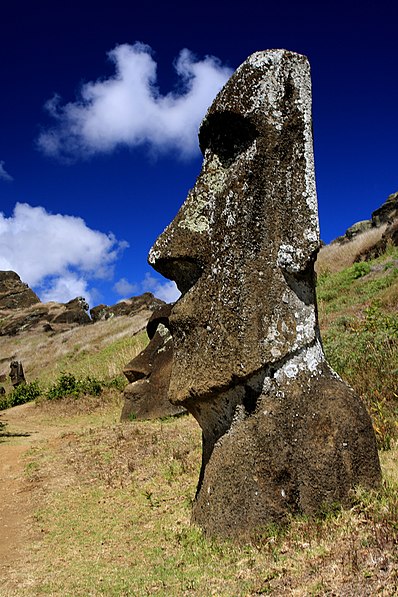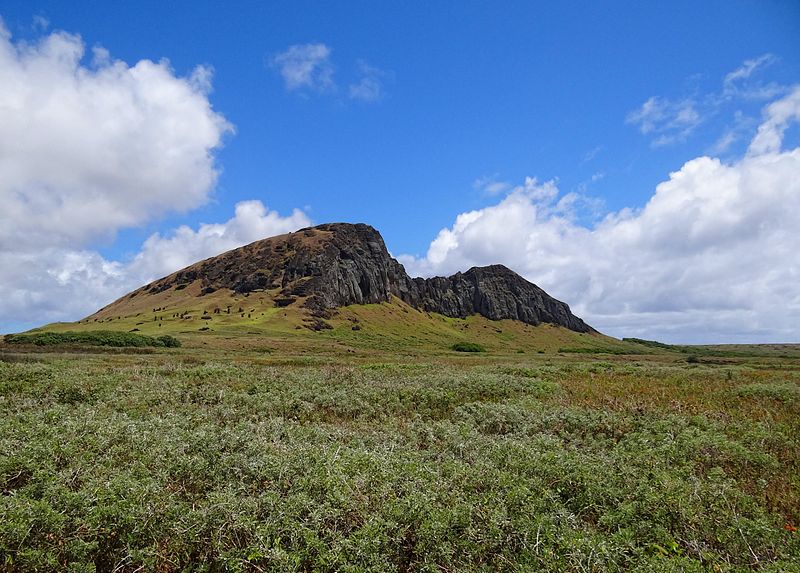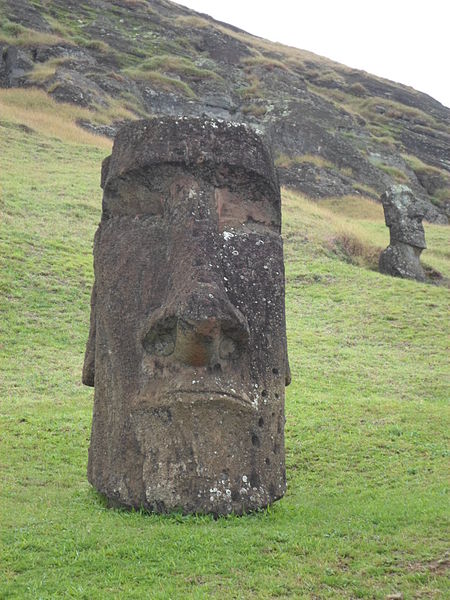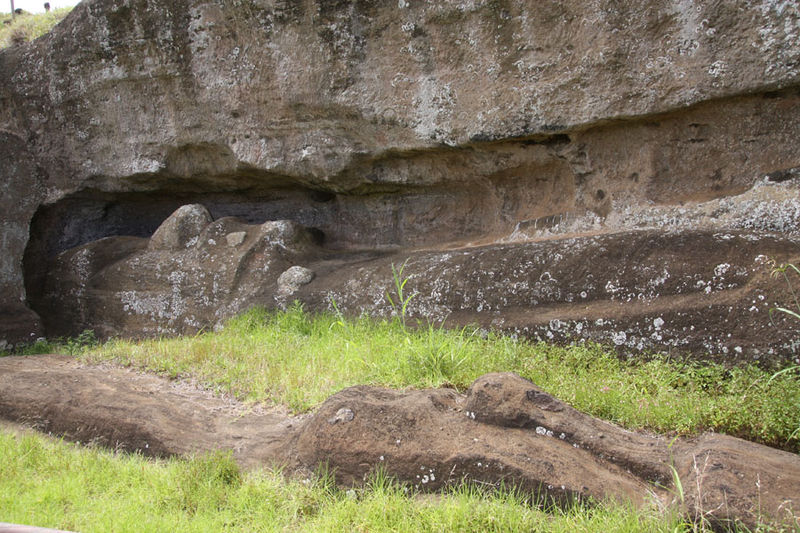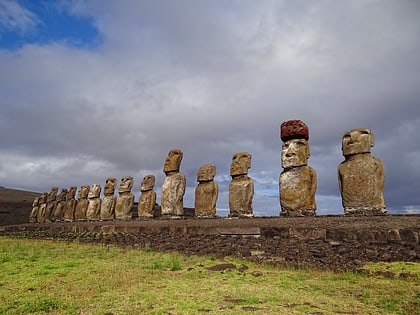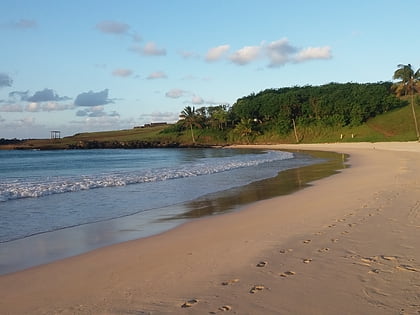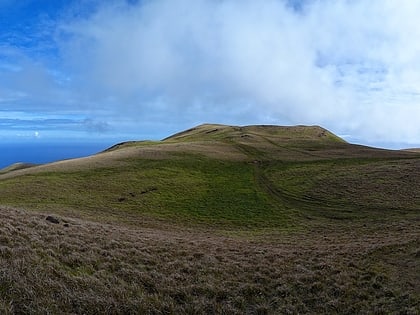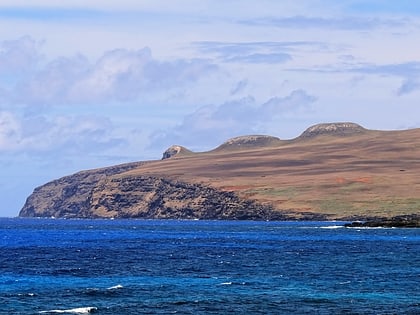Rano Raraku, Rapa Nui National Park
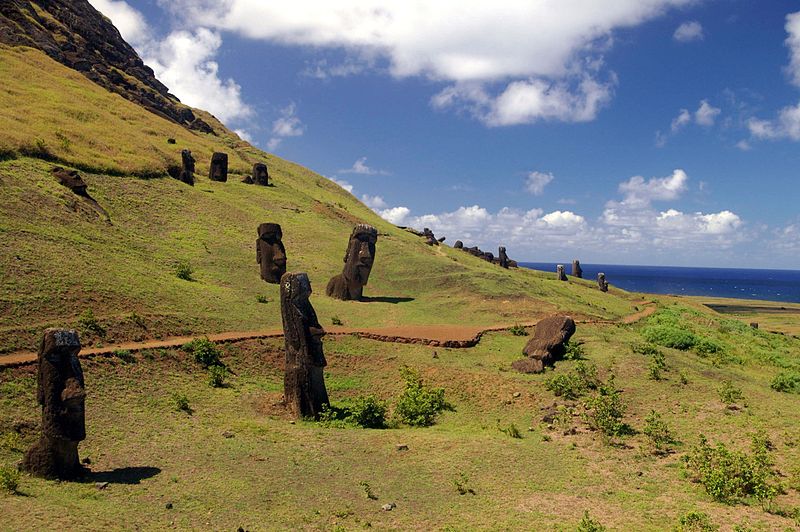
Facts and practical information
Rano Raraku: The Cradle of Moai Statues in Rapa Nui National Park, Chile
Nestled on the slopes of a dormant volcano on the remote Easter Island, Rano Raraku is a site of both mystery and majesty. Known as the "nursery" of the iconic moai statues, this volcanic crater serves as a stone quarry and is one of the most significant and awe-inspiring attractions within the Rapa Nui National Park in Chile.
The site of Rano Raraku is an open-air repository of history, where visitors can witness nearly 400 moai in various stages of completion, scattered across the quarry. These colossal stone figures, some standing over 10 meters tall and weighing several tons, are believed to represent the spirits of ancestors and were carved by the Rapa Nui people between the 13th and 16th centuries.
A visit to Rano Raraku offers a unique glimpse into the ancient methods of moai construction. Tourists can observe the marks of the stone tools, known as toki, which were used to carve these monolithic statues directly from the bedrock. The volcanic tuff from which the moai were carved is soft enough to be shaped but hardens upon exposure to air, making it an ideal material for the island's sculptors.
The crater itself is a place of stunning natural beauty, with a freshwater lake that adds a serene ambiance to the area. Visitors are encouraged to take a leisurely walk around the site, where they'll encounter moai that are partially buried, fully standing, or lying on their backs, seemingly in wait for transportation to their intended ahu (ceremonial platforms).
Rano Raraku is not only a testament to the ingenuity and craftsmanship of the Rapa Nui people but also a poignant reminder of their mysterious decline. Theories abound as to why the statue carving ceased, ranging from overpopulation and resource depletion to internal conflicts and European contact.
When planning a visit to Rano Raraku, it's advisable to hire a local guide who can provide in-depth knowledge of the site's history and legends. The quarry is open to visitors year-round, but the best time to go is during the cooler months from May to October.
As part of the Rapa Nui National Park, Rano Raraku is a UNESCO World Heritage Site and is protected under Chilean law. Tourists should respect the sacredness of the site by staying on designated paths, not touching the statues, and leaving no trace of their visit.
Rano Raraku – popular in the area (distance from the attraction)
Nearby attractions include: Ahu Tongariki, Anakena, Terevaka, Poike.
